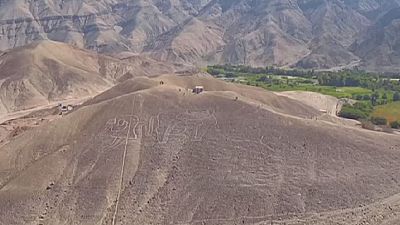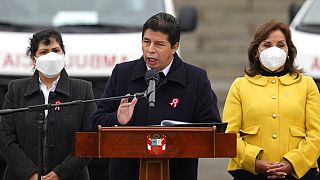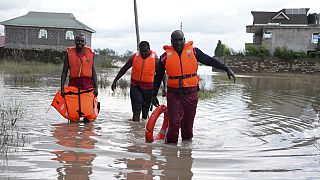Peru
Archaeologists using drones have discovered more than 25 geoglyphs etched into a swath of coastal desert in southern Peru near the Nazca Lines.
Most of the newly found geoglyphs, which include figures of a killer whale and a woman dancing, appear to have been made by the Paracas culture, as long ago as more than 2,000 years ago, hundreds of years before the Nazca people created similar giant drawings nearby, said Johny Isla, an archaeologist who heads the culture ministry’s conservation efforts in the region.
An additional 25 geoglyphs that had previously been spotted by local residents have also been mapped with drones, Isla said.
Drones “have allowed us to broaden our documentation and discover new groups of figures,” Isla said on a tour of the geoglyphs in the province of Palpa.
But unlike the Nazca lines, most of which can only be seen by flying above them, many of the so-called Palpa Lines were carved into hillsides and can be seen from below, Peru’s culture ministry said in a statement.
The geoglyphs created by the Nazca and Paracas cultures are striking reminders of Peru’s rich pre-Columbian history and are considered archaeological enigmas, as no one knows for sure why they were drawn, or so large and for so long.
“Before we are able to do the topographic survey in an area like this, we could take weeks if not months and the cost was very high, now we can do that same work with much more precision in minutes”, said archaeologist from the University of Peru, Luis Jaime Castillo.
Declared a UNESCO world heritage site in 1994, the Nazca Lines have faced damage by squatters looking for land to settle on and motorists veering off a nearby highway.
In 2014, environmental group Greenpeace apologized to Peru for staging a picture to protest dirty fuels at the Nazca geoglyph of a hummingbird, which government officials said was damaged as a result.
Peru’s culture ministry said the Greenpeace incident prompted the culture ministry to ramp up efforts to protect archaeological sites in the region, helping lead to the new discoveries.
Reuters














02:20
Morocco: Arabic calligraphy exhibition celebrates Islamic heritage
02:20
Remake of 'Don’t Tell Mom the Babysitter’s Dead' released this week
02:20
Inedible for some, delicious for others: inside Berlin's 'Disgusting food' museum
02:18
London: art exhibit examines Black representation
01:18
''Dahomey'' by French-Senegalese Diop wins top prize at Berlin Film Festival
02:15
Central Africa faces challenges of cultural integration